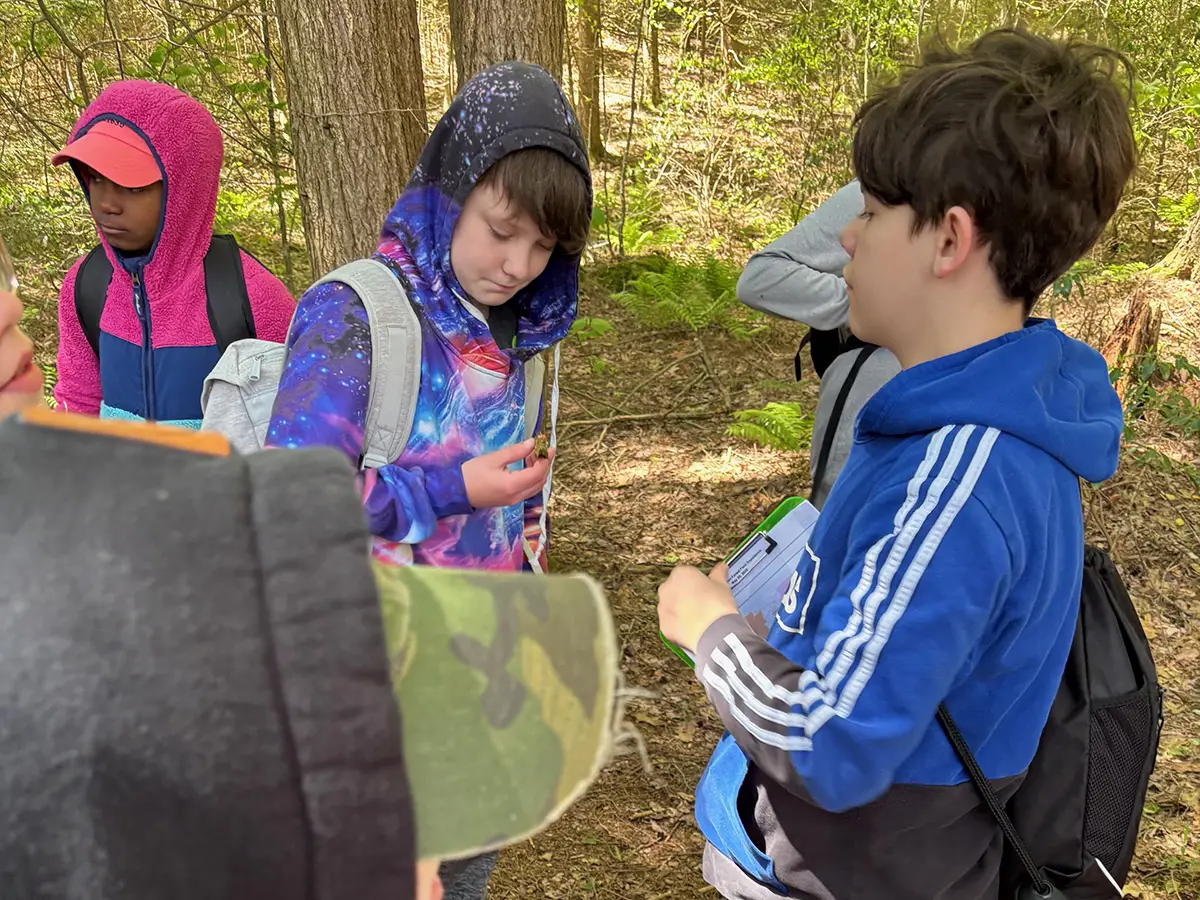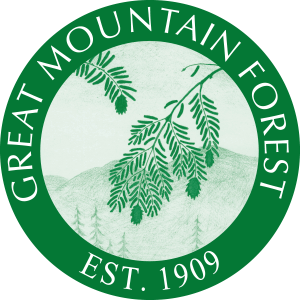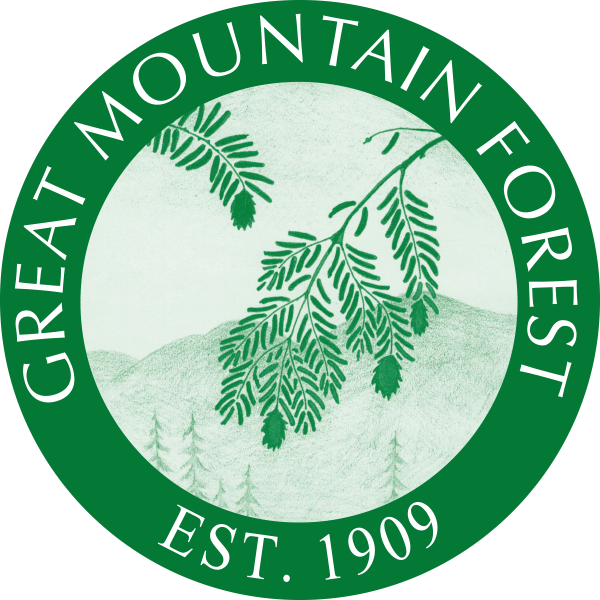Seeing the Forest Through the Trees- A Dendrology Adventure

Most Prevalent Themes:
- Tree Identification & Adaptations – MS-LS1-4
- Forest Health & Disturbance – MS-LS2-1
- Tree Anatomy & Environmental History – MS-LS1-4
- Carbon Storage & Forest Products – MS-ESS3-3
- Sustainable Forest Management & Stewardship – MS-ESS3-3
Audience:
Middle School (adaptable to elementary and high school)
Duration:
2 ½ hours
Extensions:
Super Seeds, Amazing Leaves, Bills and Bites: How Plants Adapt to Survive” 90 minutes
Description
This hands-on, interactive field trip will take students through Great Mountain Forest (GMF) in Northwest Connecticut to investigate the geological processes that shaped the landscape. Students will explore glacial features like bedrock and glacial erratics, roche moutonnée, a charcoal mound, and a kettle pond. They will use scientific tools such as compasses, magnifying lenses, and soil analysis equipment, model the formation of a kettle pond, and analyze how different rock types and minerals affect local ecosystems. Engaging, tactile activities—including edible rock demonstrations—help students understand the rock cycle, plate tectonics, and how glaciers altered the region.
Throughout the day, students are challenged to develop and support claims about Earth’s past, the forces that shaped it, and how human choices impact soil, forest health, and biodiversity. They will observe evidence, weigh competing ideas, and construct reasoning to explain the connections between geology, ecology, and human activity. The geology module doesn’t just teach students about rocks—it asks them to think critically about how Earth’s history shapes today’s ecosystems and how humans can influence environmental outcomes. By emphasizing these connections, the module cultivates environmental stewardship, conservation ethics, and a deeper understanding of the consequences of human choices. This is a full-day field trip.
Learning Intentions:
By the end of the session, students will be able to:
- Identify and classify common tree species using field guides, bark, branching, and leaf characteristics.
- Compare structural and adaptive traits of different trees and explain how these adaptations support survival in specific environments.
- Detect and evaluate signs of tree damage or forest health stressors and explain their potential influence on forest ecosystems.
- Analyze tree cookies (cross-sections) to interpret growth patterns, age, and past environmental conditions, making inferences about how weather, competition, and disturbance events shape forests.
- Measure tree size (DBH and height) and estimate biomass and carbon storage.
- Describe how different parts of a tree (roots, trunk, bark, leaves) work together as a system, and explain how resource availability affects growth and resilience.
- Evaluate sustainable forest management practices (e.g., selective cutting, regeneration, maintaining habitat diversity) and propose evidence-based methods for balancing ecological health with human needs.

